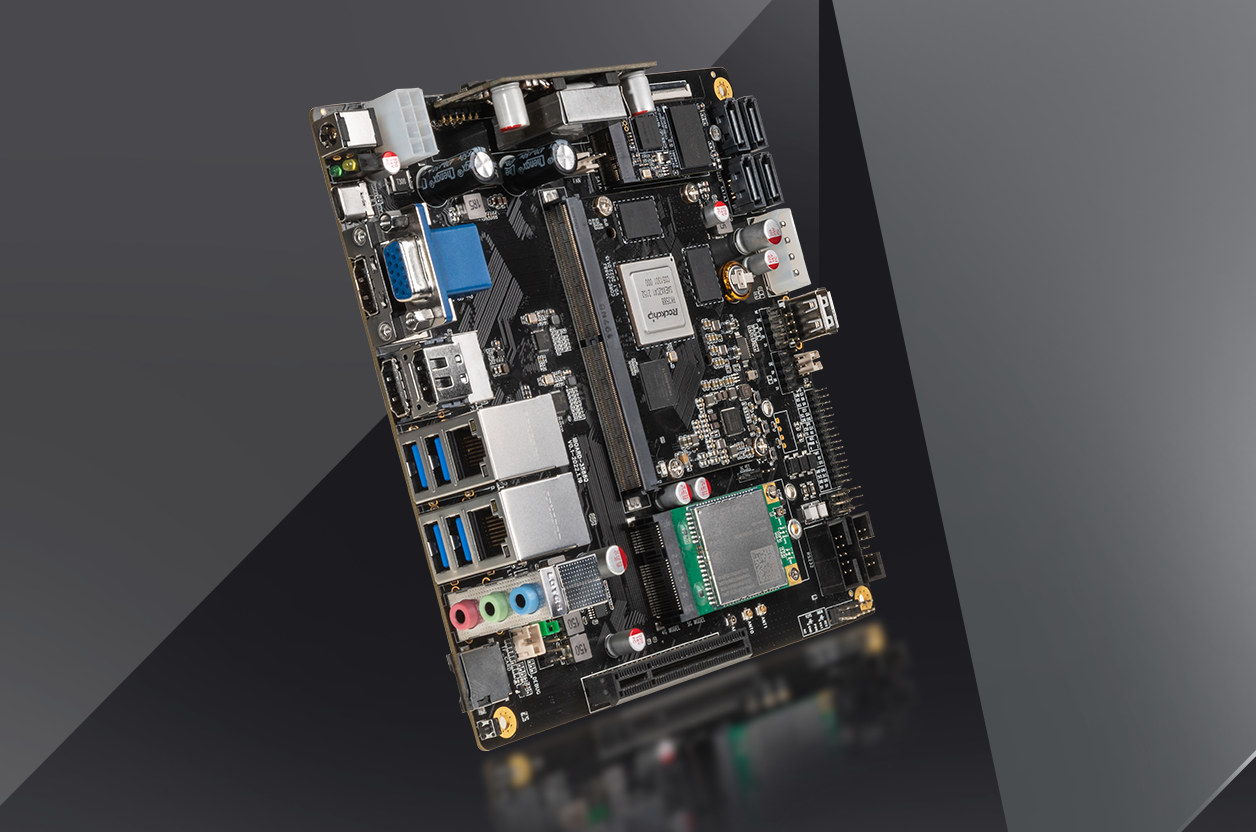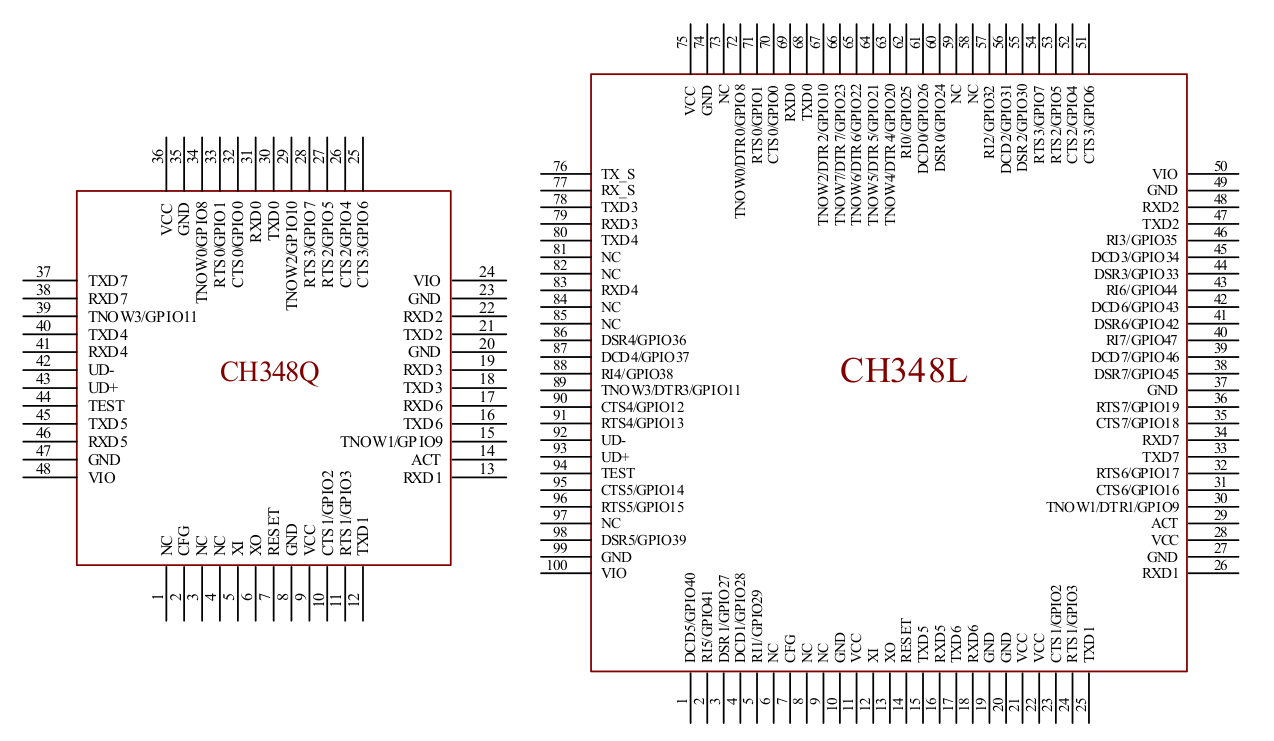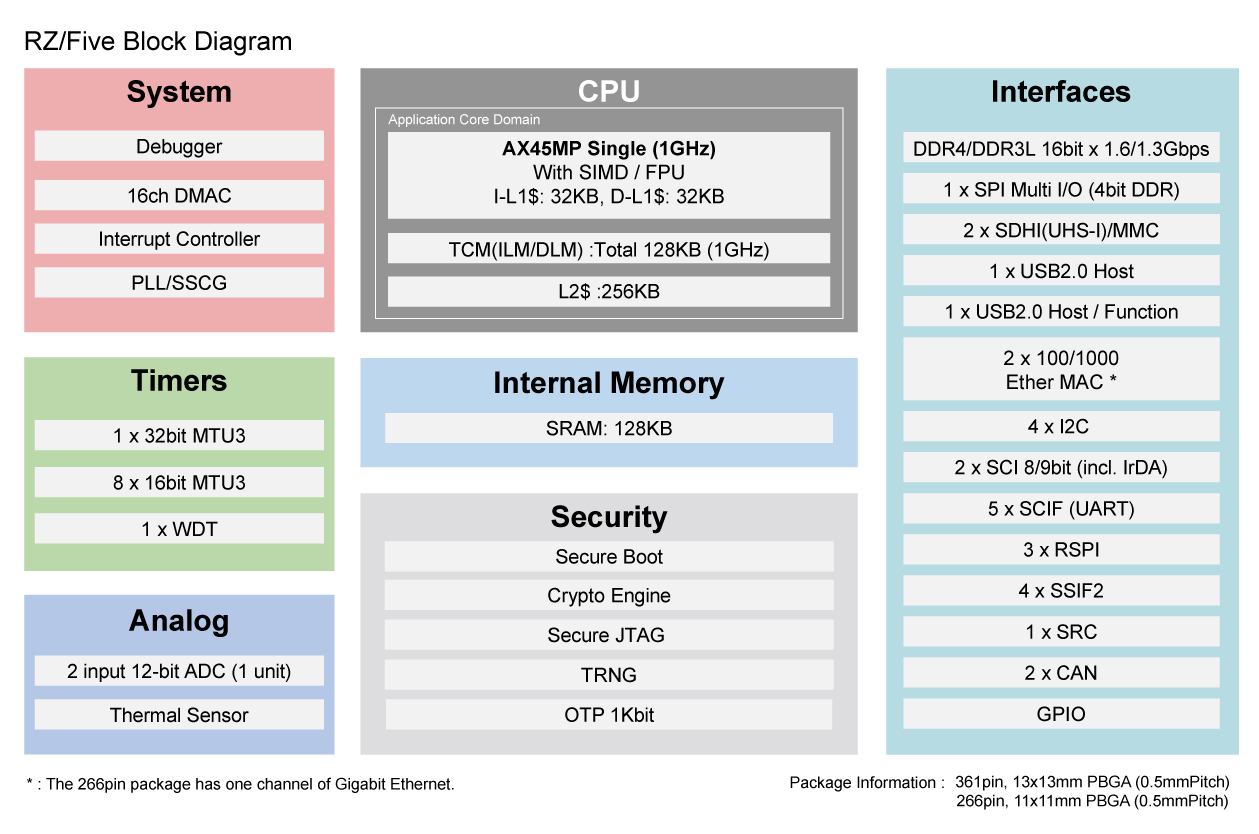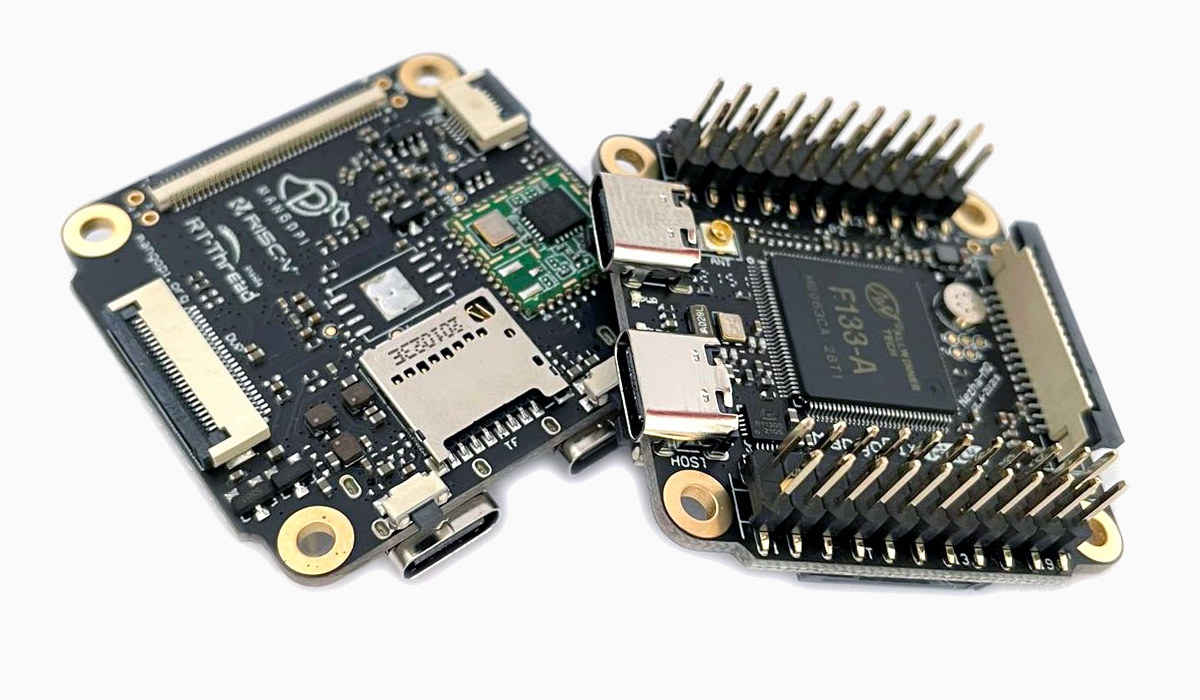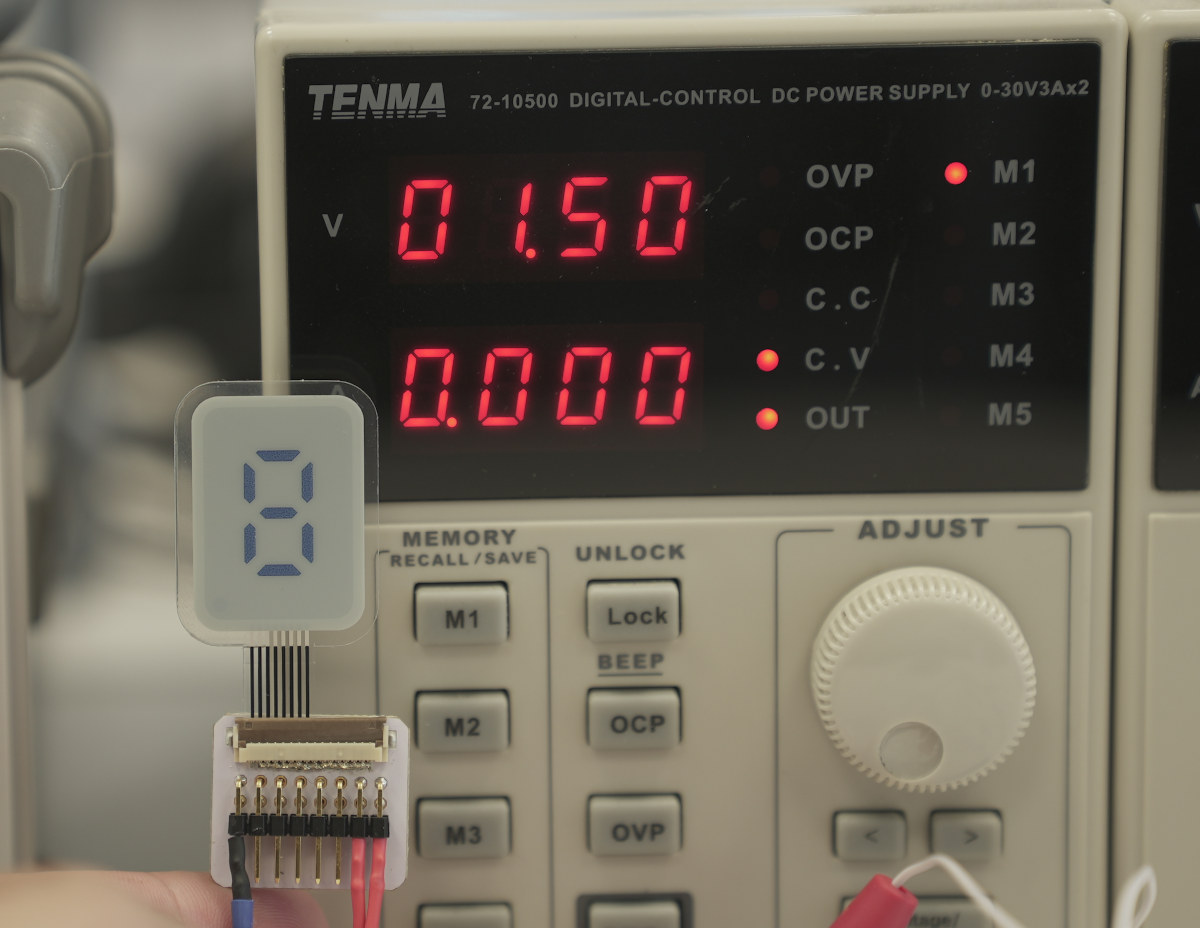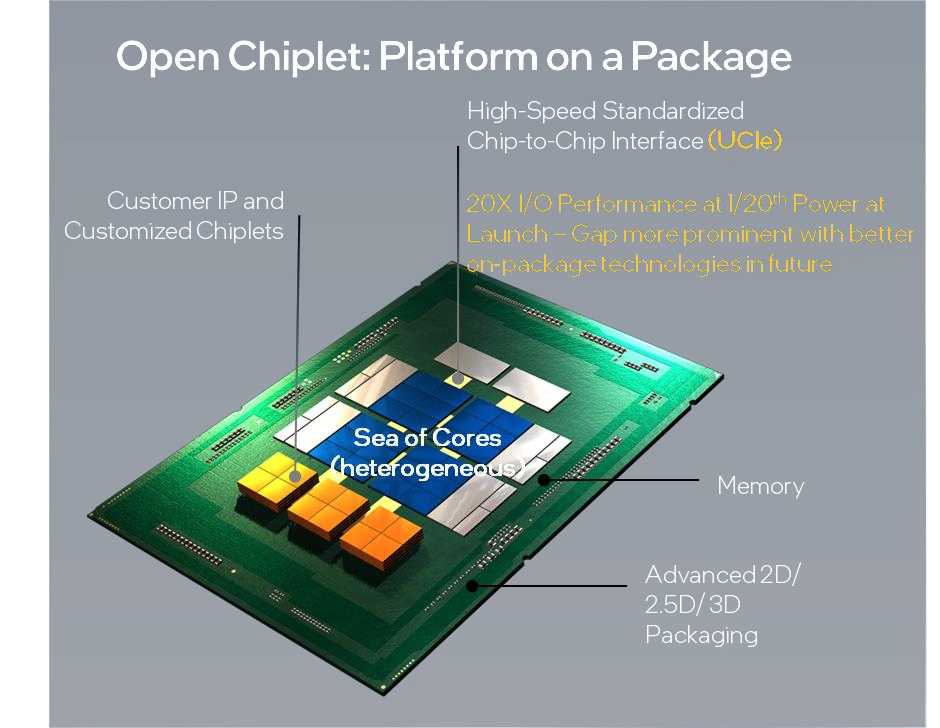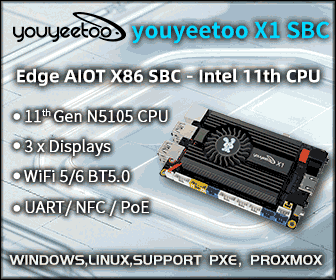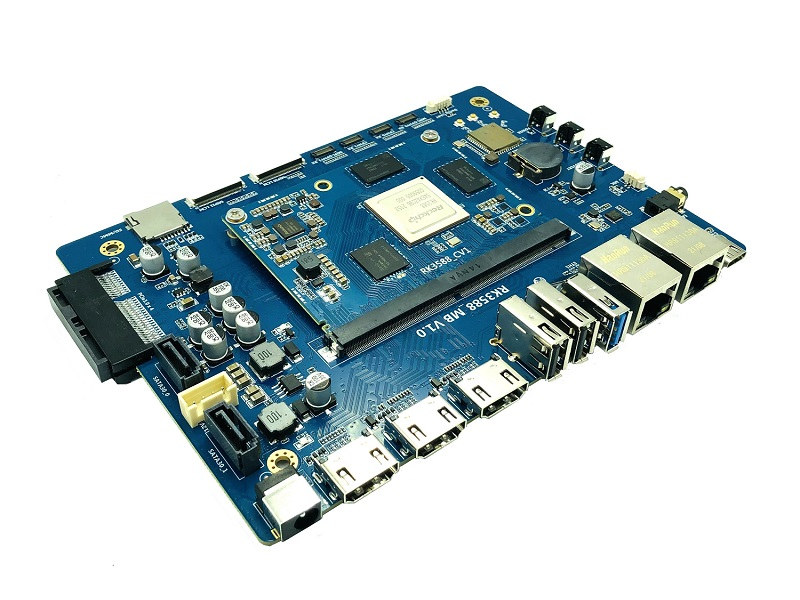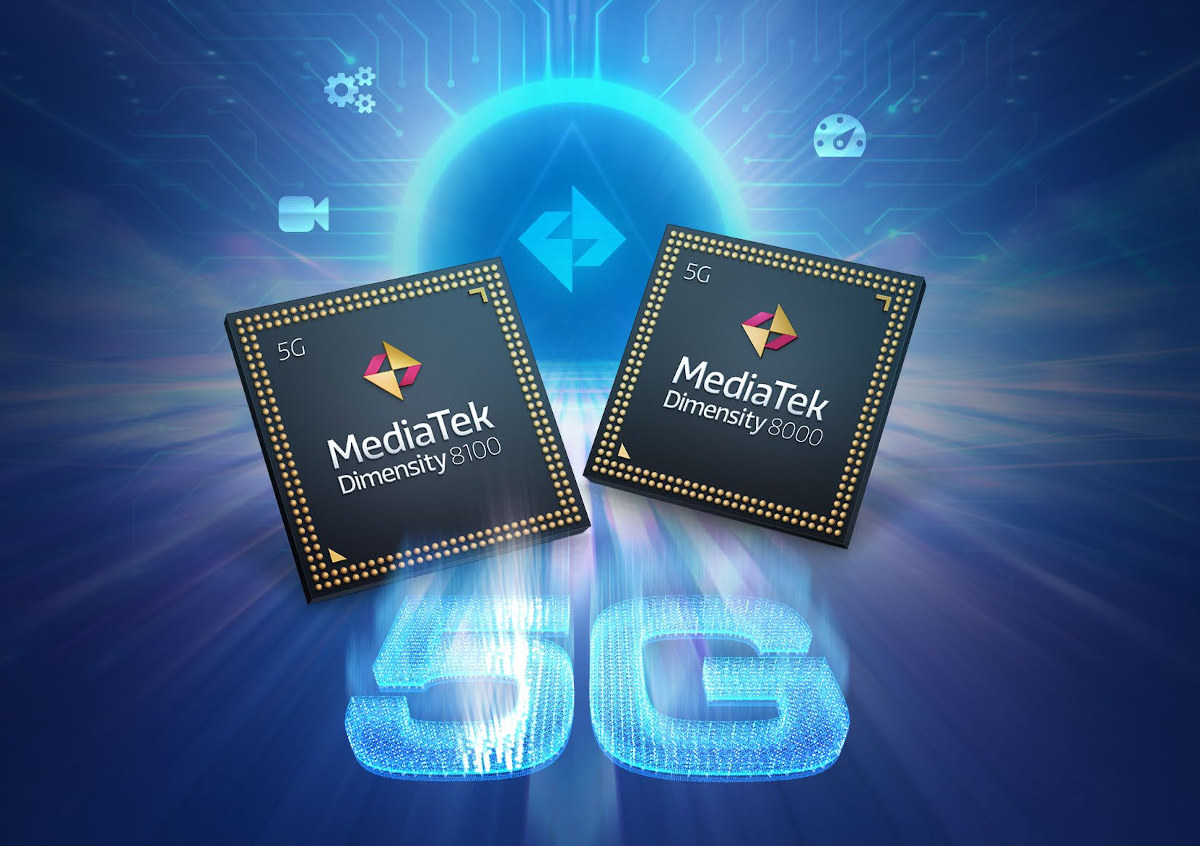After Radxa ROCK5 Pico-ITX SBC and Banana Pi RK3588 SoM and devkit, Firefly ITX3588J mini-ITX motherboard is the third hardware platform we’ve seen with Rockchip RK3588 octa-core Cortex-A76/A55 processor. The board will be interesting to people wanting an Arm PC or workstation as the mini-ITX form factor will allow the board to be fitted to a standard enclosure, and there’s plenty of resources and I/Os with up to 32GB RAM, four SATA ports, multiple 8K/4K video outputs and inputs, dual Gigabit Ethernet, WiFI 6 and Bluetooth 5.0, a PCIe 3.0 x4 slot, and more. Firefly ITX3588J mini-ITX motherboard specifications: SoC – Rockchip RK3588 octa-core processor with four Arm Cortex-A76 cores @ up to 2.4 GHz, four Arm Cortex-A55 cores, ArmMali-G610 MP4 quad-core GPU with support for OpenGL ES3.2, OpenCL 2.2, Vulkan1.1, 6 TOPS NPU, 48MP ISP, 8Kp60 video decoding, 8Kp30 video encoding System Memory – 4GB, 8GB, 16GB, or 32GB […]
WCH CH348 is an 8-port USB to serial chip with up to 48 GPIOs
If you need to control or debug multiple devices over UART devices, you’d be glad to learn WCH has just launched the CH348 USB to serial chip with eight UART ports. Two models are offered CH348L in an LQFP100 package and CH348Q in an LQFP48 package. Both offer eight UART interfaces, but CH348L comes with more CTS/RTS and DTR/hardware flow control signals, as well as DTR, DCD, RI signals, and support for independent voltage for I/Os. CH348 key features specifications: High-speed USB device interface Hardware full-duplex serial port, integrated independent transmit-receive buffer Baud rate varies from 1200bps to 6Mbps. The serial ports support 8 data bits, odd, even, and none parity, 1/2 stop bit. Each serial port comes with a 2048-byte receiving FIFO and a 1024-byte transmitting FIFO. Signals RTS, DTR, DCD, RI, DSR, and CTS supported for hardware flow control The MODEM interface signal pins and 485 transmit and […]
Renesas introduces RZ/Five Linux-capable 64-bit RISC-V microprocessor family
Renesas has launched its first RISC-V processor family with the RZ/Five general-purpose microprocessors based on an Andes AX45MP 64-Bit RISC-V CPU core, and with long-term Linux support via the industrial-grade CIP Linux that offers maintenance for over 10 years. The RISC-V processor is pin-to-pin compatible with the Arm Cortex-A55/M33–based RZ/G2UL processor family, and while being a general-purpose family, the RZ/Five chips are specifically well-suited to IoT endpoint devices such as gateways for solar inverters or home security systems. Renesas RZ/Five key features and specifications: CPU – Single-core 64-bit RISC-V AX45MP core @ up to 1.0 GHz Internal Memory – 128KB SRAM with ECC Memory I/F – 16-bit DDR4-1600 or DDR3L-1333 memory interfaces with in-line ECC; up to 4GB RAM Storage I/F – 2x SD/eMMC interfaces, SPI flash interface Networking – 2x Gigabit Ethernet MAC USB – 2x USB 2.0 Audio – 4-channel serial sound interface (SSI) Serial – 2x CAN/CAN-FD […]
$39 MangoPi-Nezha MQ RISC-V developer board runs OpenWrt, Debian, or RT-Smart RTOS (Crowdfunding)
MangoPi-Nezha MQ tiny developer board with Allwinner F133-A (aka Allwinner D1s) RISC-V processor with 64MB on-chip RAM has just launched on Crowd Supply for $39, and delivery is expected in July 2022. The 4x4cm development board comes with a MicroSD card slot, display and camera interfaces, an on-board microphone, as well as WiFi connectivity, two USB Type-C ports, and two 22-pin headers for expansion. MangoPi-Nezha MQ specifications: SoC – Allwinner F133-A 64-bit RISC-V processor @ 1 GHz with 64 MB DDR2 Storage MicroSD card slot Footprint for SPI NAND/NOR flash Display I/F 15-pin FPC connector Raspberry Pi DSI display 40-pin FPC connector for RGB display with 4-wire resistive-touch interface 6-pin FPC connector for capacitive touch Camera I/F – 24-pin DVP interface (usable as RMII) Audio – On-board microphone, audio output via 2-pin header (unpopulated) Connectivity 2.4 GHz WiFi 4 via Realtek RTL8189 module plus u.FL antenna connector 10/100Mbps Ethernet (RMII) […]
Ultra-low power printed flexible E-paper displays work with Arduino
Ynvisible Interactive will soon release upgrades to their printed flexible E-paper displays that consume 50% less energy per switch and can last 10 longer when switched on and off, with the company claiming to offer the lowest energy-consuming displays in the e-paper industry. Those displays are mostly used in specific industries such as digital signage, smart monitoring labels, authenticity & security, and retail. While we have very little information about the new upgrades, I’ve noticed the company is offering a development kit with several “ultra-low-power, thin and flexible Segment E-Paper Displays”, so let’s have a look. Here are some of the specifications of the displays part of the kit: White Reflectance – 40% Contrast Ratio (Yb/Yd) – 1:3 Angle Dependency – No, lambertian Thickness – 300 μm (0.3 mm) Graphical layout – Segments with 1mm to 100mm dimensions Response time – 100-1000 ms Driving voltage – 1.5 V (direct drive) […]
UCIe (Universal Chiplet Interconnect Express) open standard for Chiplets with heterogeneous chips
We first heard about Chiplet, chips that gather IP or chips from different vendors into a single chip, in 2020 with the now-defunct zGlue’s Open Chiplet Initiative, but the term recently came back to the forefront last month with Intel’s investment into the “Open Chiplet Platform” that aims to offer a modular approach to chip design through chiplets with each block/chiplet customized for a particular function. It turns out there’s now an official standard called the Universal Chiplet Interconnect Express (UCIe) whose specification defines the interconnect between chiplets within a package, and not only backed by Intel, but also AMD, Arm, ASE, Google Cloud, Meta, Microsoft, Qualcomm, Samsung, and TSMC. UCIe defines the Physical Layer (Die-to-Die I/O) and protocols to be used for the chiplet interfaces, currently PCIe and CXL (Compute Express Link), but more protocols will be added to the specification in the future. The goal is to provide […]
Banana Pi teases BPI-RK3588 Rockchip RK3588 SoM and development kit
Banana Pi has showcased its first engineering samples of a Rockchip RK3588 SoM (system-on-module) with up to 8GB RAM and 128GB flash, as well as a development kit with dual Ethernet, three HDMI ports, SATA interfaces, PCIe interface, and more. Rockchip RK3588 octa-core Cortex-A76/A55 processor is the most powerful from the company, both in terms of CPU and GPU power, but also with a wide range of high-speed interfaces, and will be found in the upcoming Radxa ROCK5 single board computer, and a yet-to-be-announced board from Pine64. Banana Pi RK3588_CV1 “Core” (BPI-RK3588) board specifications: SoC- Rockchip RK3588 octa-core processor with four Cortex-A76 cores @ 2.4 GHz, four Cortex-A55 cores @ 1.8 GHz, an Arm Mali G610MC4 GPU, a 6 TOPS NPU, 8K 10-bit decoder, 8K encoder System Memory – 2GB, 4GB or 8GB LPDDR4 Storage – 32GB, 64GB, or 128GB eMMC flash 313-pin edge connector for I/Os including PCIe 3.0, […]
MediaTek Dimensity 8000/8100 Cortex-A78/A55 processor to power premium 5G smartphones
MediaTek Dimensity 8000/8100 Arm Cortex-A78 processors for 5G premium smartphones bring many of the features of the flagship Dimensity 9000 Armv9 processor announced last December, but at a more affordable price point. Designed for gamers, the Dimensity 8100 integrates four Arm Cortex-A78 cores with speeds reaching 2.85GHz instead of 2.75GHz for the Dimenssity 8000, and boosts GPU and AI engine’s frequencies to 20% and 25% respectively. MediaTek Dimensity 8000/8100 specifications: Octa-core CPU subsystem 4x Arm Cortex-A78 up to 2.75 GHz (Dimensity 8000) / 2.85 GHz (Dimensity 8100) 4x Arm Cortex-A55 up to 2.0 GHz 4MB L3 cache GPU – Arm Mali-G610 MC6 GPU (Dimensity 8100 with 20% frequency boost) with MediaTek HyperEngine 5.0 gaming technologies AI Accelerator – 5th generation MediaTek APU 580 (Dimensity 8100 with 25% frequency boost) Memory I/IF – LPDDR5 6400 Mbps Storage I/F – UFS 3.1 Display Dimensity 8000 – 168Hz Full HD+ Dimensity 8100 – 120Hz […]

